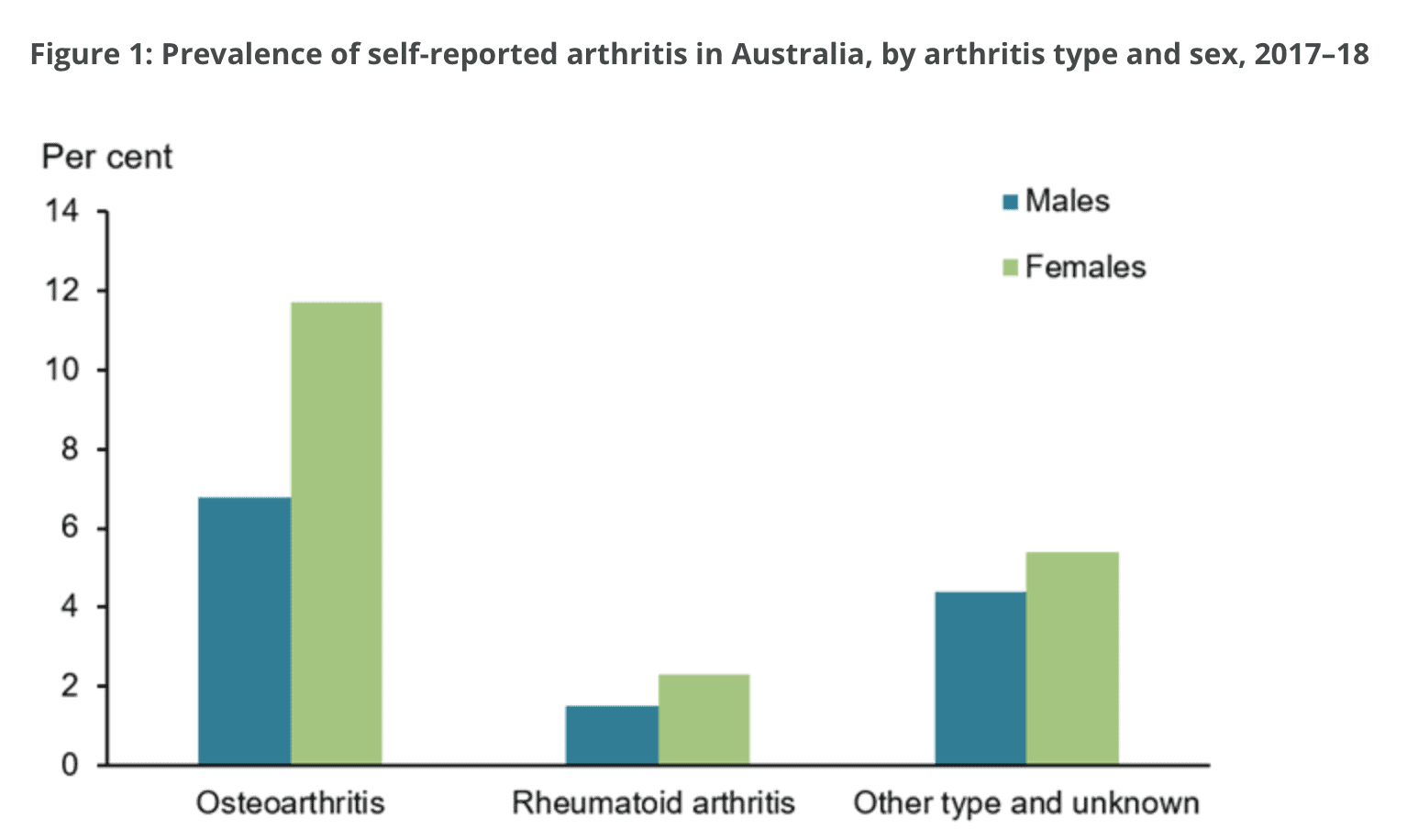Are you looking for ways to manage osteoarthritis (OA)?
Osteoarthritis is the most common form of arthritis. If you have it, you’ll understand the pain and frustration associated with this condition. And if someone you love has OA, you may feel helpless and be looking for osteoarthritis pain relief solutions.
The best way to mange osteoarthritis is via education. It’s considered an important part of osteoarthritis rehabilitation, and this article will help you with this process.

What Is Osteoarthritis?
Osteoarthritis is a chronic inflammatory condition that occurs when the cartilage (a connective tissue) protecting and cushioning the ends of bones deteriorates. It often affects the knee or hips, but can impact any joint in the body.
The exact cause of osteoarthritis isn’t clearly understood and has evolved over time. Currently, OA experts tell us that symptoms develop when the affected joint works hard to repair itself.
But, what causes this painful deterioration?
It could be:
- Age, as being over 40 is a risk factor
- Obesity, as carrying extra weight puts more pressure on joints
- Previous joint injury
- Joint abnormalities
- Genetics.
In 2018, the Australian Bureau of Statistics showed that women are more susceptible to developing osteoarthritis. Their data revealed:
- 12% of Aussie females have osteoarthritis
- 6.8% of Aussie males have osteoarthritis
The same data shows that Indigenous Australians are more prone to osteoarthritis, regardless of sex.

Osteoarthritis Symptoms
It can be difficult to manage osteoarthritis. Uncomfortable symptoms can include:
Joint Pain
The affected joint can feel painful before, during or after use. Pain usually increases as cartilage erodes and joint degeneration progresses.
Stiffness
Cartilage is usually soft and pliable. Unfortunately, OA inflammation damages cartilage and impairs its natural ability to flex. This causes joints to stiffen and movements to lose fluidity.
Inflammation
Joint degeneration causes inflammation, swelling, warmth and discomfort locally. Sometimes, these symptoms become more systemic (all around the body).
Reduced Range of Motion
Joints that are painful, stiff and inflamed have a reduced range of motion, e.g.
- knee or hip osteoarthritis patients often struggle walking down stairs
- wrist osteoarthritis patients may find it hard to hold a pen or pencil.

Osteoarthritis Diagnosis
You can manage osteoarthritis better if you have proper investigations. Here’s what’s involved with getting an osteoarthritis diagnosis.
- Visit Your GP
They will take a case history and examine your joint, looking for redness, inflammation, swelling and movement restrictions.
- Imaging
Your GP may order an X-Ray to see if there’s narrowing of the spaces between joints (suggests cartilage changes). If results are not conclusive, an MRI can show detailed images of bones, cartilage and other connective tissues.
- Blood Tests
There is no specific osteoarthritis blood test. Evenso, they’re useful for measuring inflammatory markers and ruling out other conditions, like rheumatoid arthritis.
- Joint Fluid Analysis
A needle is used to extract fluid from within the painful joint. It’s used to examine the fluid’s colour and thickness, inflammatory chemicals, and the presence of crystals, bacteria and other microscopic substances.

How to Relieve Pain And Manage Osteoarthritis
Osteoarthritis pain management usually requires a multidisciplinary approach. This may include:
Anti-inflammatories
Anti-inflammatories offer some of the best pain relief for osteoarthritis. Herbs, such as Boswellia, Cat’s Claw, Curcumin, can reduce inflammation and pain. These are a safer alternative to anti-inflammatory drugs (NSAIDs), which come with side effects. Acupuncture can also help relieve inflammation and pain.
Losing Weight
Being overweight makes osteoarthritis symptoms worse because it puts extra pressure on joints. If you’re obese or overweight, the best option for pain relief and potential remission is to lose those extra kilograms. If you need help, Nutritionists can help with anti-inflammatory, weight loss dietary plans.
Assistive Devices
Using devices that take the pressure off weight bearing joints is a great way to get osteoarthritis pain relief.
- Knee osteoarthritis = Use a knee brace or walking stick
- Hip osteoarthritis = Use a walking stick, walker or crutches
- Wrist osteoarthritis = Use adaptive utensils like electric can openers, food processors and mandolins for slicing.

How To Manage Osteoarthritis
Diet
Avoiding inflammatory foods is essential for managing osteoarthritis symptoms. Foods to limit: refined grains and sugars, red meats and processed meats like bacon, ham, hot dogs, fried foods, commercial snack foods, soda drinks.
Exercise
Most forms of exercise are useful for osteoarthritis patients. However, the 2 best methods to mange osteoarthritis (as recommended by Physiotherapists) are Resistance Exercise and Neuromuscular Exercise. Together, they help with:
- muscle strength
- joint stability
- the ability to move side-to-side, front and back, and rotationally
- joint replacement surgery.
Platelet-Rich Plasma (PRP)
This controversial approach uses ingredients from your own blood to treat damaged tissues. It involves injecting a special fluid, rich in growth factors and cytokines, into the affected joint to reduce pain and encourage healing.
Keen to get specialist help for your osteoarthritis?
Avaana can help! Click a link below to get started:



